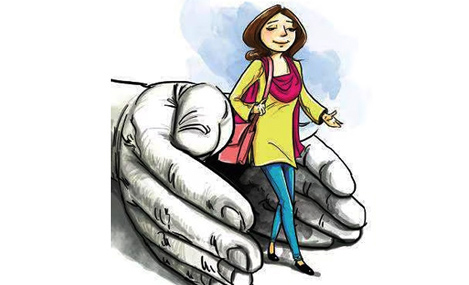Ensuring women’s safety in India is a pressing concern that demands immediate and sustained attention. Despite legislative reforms and public awareness campaigns, incidents of violence against women continue to surface, underscoring deep-seated societal challenges.
Current Scenario and Statistics
In August 2024, the nation was shaken by the brutal rape and murder of a 31-year-old trainee doctor in Kolkata. This heinous act not only led to widespread protests but also highlighted the vulnerabilities women face, even in professional environments. The incident spurred the Supreme Court to establish a national task force aimed at recommending measures to enhance workplace safety for women.
Such incidents are not isolated. In 2022, India recorded 31,516 cases of rape, marking a 20% increase from the previous year.
This alarming statistic translates to a rape occurring approximately every 16 minutes.
The pervasive threat of violence significantly impacts women’s participation in the workforce. In 2022, only 30% of Indian women aged 15 to 64 were employed, a stark contrast to the global average of 47%.
Safety concerns, coupled with societal norms, deter women from seeking employment, thereby hindering the nation’s economic growth. Analysts suggest that enhancing women’s safety and workforce participation is crucial for India to achieve its ambitious economic targets.
Contributing to Women’s Safety
Addressing this multifaceted issue requires collective action from individuals, communities, and institutions. Here are some ways we can contribute:
- Education and Awareness: Promote gender sensitivity from an early age. Educational institutions should incorporate modules that challenge traditional gender roles and emphasize respect and equality.
- Strengthening Legal Frameworks: While laws exist to protect women, their enforcement remains inconsistent. Advocating for swift and stringent legal action against perpetrators can serve as a deterrent.
- Safe Public Spaces: Urban planning should prioritize women’s safety by ensuring well-lit streets, accessible public transportation, and surveillance in isolated areas. Community policing and neighbourhood watch programs can also play a pivotal role.
- Workplace Safety: Organizations must implement robust policies against sexual harassment and provide secure environments for female employees. Regular training sessions and anonymous reporting mechanisms can empower women to voice their concerns.
- Support Systems: Establishing accessible support services, such as helplines, counselling centres, and shelters, is vital for survivors of violence. Community support groups can also offer a platform for women to share experiences and seek assistance.
- Engaging Men and Boys: Men play a crucial role in challenging and changing patriarchal norms. Encouraging open dialogues about masculinity and promoting positive role models can foster a culture of respect.
- Leveraging Technology: Safety apps that allow women to share their real-time location with trusted contacts can act as preventive tools. Additionally, social media platforms can be utilized to raise awareness and mobilize support for women’s safety initiatives.
- Community Vigilance: Communities must remain vigilant and proactive in reporting suspicious activities. Building a culture where violence against women is neither tolerated nor ignored is essential.
- Economic Empowerment: Financial independence can provide women with the means to leave abusive situations. Vocational training programs and employment opportunities tailored for women can aid in this empowerment.
- Policy Advocacy: Engage with policymakers to push for reforms that prioritize women’s safety and equality. Public participation in governance can ensure that women’s issues remain at the forefront of national agendas.
In conclusion, the safety of women in India is not just a women’s issue; it is a societal imperative. By adopting a holistic approach that encompasses legal reforms, societal change, and individual responsibility, we can aspire to create an environment where women feel safe, respected, and empowered. Collective action is the cornerstone of this endeavour, and every effort counts towards building a safer nation for all.
#WomensSafety #SafeIndiaForWomen #EndViolenceAgainstWomen #StopGenderViolence #WomensRights #SpeakUp #JusticeForWomen #EmpowerWomen #BreakTheSilence #GenderEquality #SayNoToViolence #StrongerLaws #ZeroTolerance #JusticeForHer #WomenSafetyLaws #StrictPunishment #SafeWorkplace #NoMoreHarassment #WomenAtWork #StreetHarassment #PublicSafety #SafetyApps #SelfDefenseForWomen #StaySafe #WomenEmpowerment #PersonalSafety #EducateBoys #RespectWomen #MenForWomen #ChangeStartsWithUs #EqualRights
Abdul Shakeeb | Logistics & Supply chain Veteran | Ex DHL

